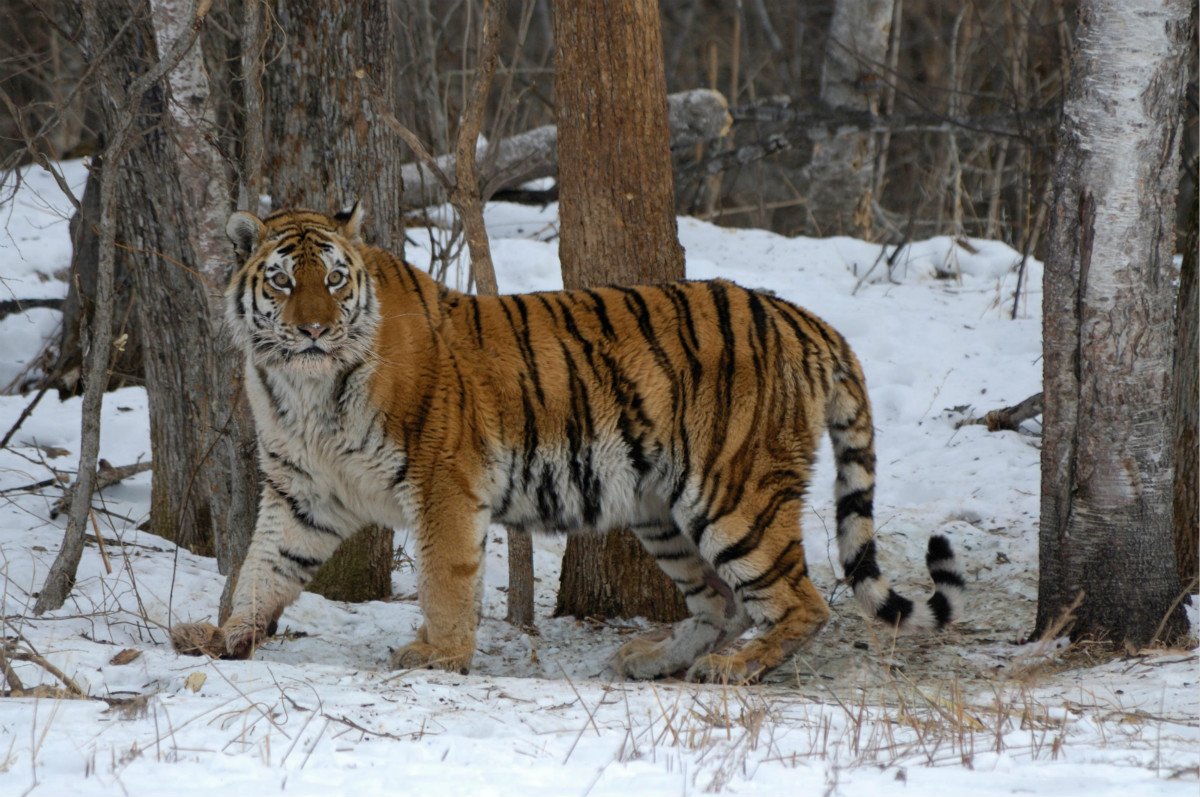Leopards and tigers are roaming in the far eastern wilderness again thanks to an historic China–Russia collaboration, paving the way for a transnational park
In 2001, Jilin province established the Hunchun National Nature Reserve, a sliver of protected land running along the border with Russia and south to the small spit of Chinese territory that borders North Korea to the west and Russia to the east. Tiger numbers gradually rose, increasing 15% between 2005 and 2015.
Ten years after the reserve was founded, Dr Ge Jianping, then vice president of Beijing Normal University, and a team of researchers started monitoring tigers in earnest, setting up cameras and looking for each animal’s unique stripe pattern in the images they caught.

Using this data and the access to Chinese policymaking that researchers like Miquelle lacked, Ge was able to advance a proposal for a national park to replace the existing reserve. The new 14,600 km2 park, stretching 60% further than Yellowstone Park, was established in 2017 as a pilot to be incorporated into a new national park system in 2020.
Support for tiger and leopard conservation was burgeoning on the Russian side too. Russia created a system of protected areas that together covered the majority of the leopard range, thanks in part to support from Sergey Ivanov, the former chief of staff of Vladimir Putin. In 2012, these were merged to form the Land of the Leopard National Park, with Darman as deputy director. That large park abuts the border with Jilin and nearly reaches Amur Bay to the east. Between 2000 and 2018, the leopard population tripled.
Last year an agreement by their governments, Russian and Chinese researchers began sharing data, resulting in an unprecedented survey of the transboundary leopard population, and the first reliable global population count.

The consolidation of the partnership between the two countries is partly due to a closer relationship between the leaders. At a meeting in Moscow in June this year, presidents Xi and Putin signed a joint declaration that included reference to creating a transboundary park to protect Amur leopards and Siberian tigers, joint monitoring, and establishing nature corridors on the border.
The transnational park, “Land of the Big Cats,” will combine China’s Northeast Tiger and Leopard National Park with Russia’s Land of the Leopard National Park and Kedrovaya Pad Nature Reserve. Putin had already ordered the preparation of the paperwork on the Russian side. In late November 2019 the Northeast China Tiger and Leopard National Park confirmed that it has signed a three-year cooperative action plan with the Russian national park to beef up cooperation in the protection of Siberian tigers and Amur leopards.
The agreement includes 14 action plans and nine long-term activities, containing special researches on cross-border activities of tigers and leopards, data sharing and nature reserves ecological protection experience exchanges, according to the management bureau of the national park, located in northeastern China’s Jilin Province.
The transational agreement will be a major topic of discussion at the meeting of the UN Convention on Biodiversity summit in Kunming, China next year, rescheduled for October 2021
Source: https://chinadialogue.net/…/11693-land-of-the-big-cats…/
Leave a Reply
You must be logged in to post a comment.